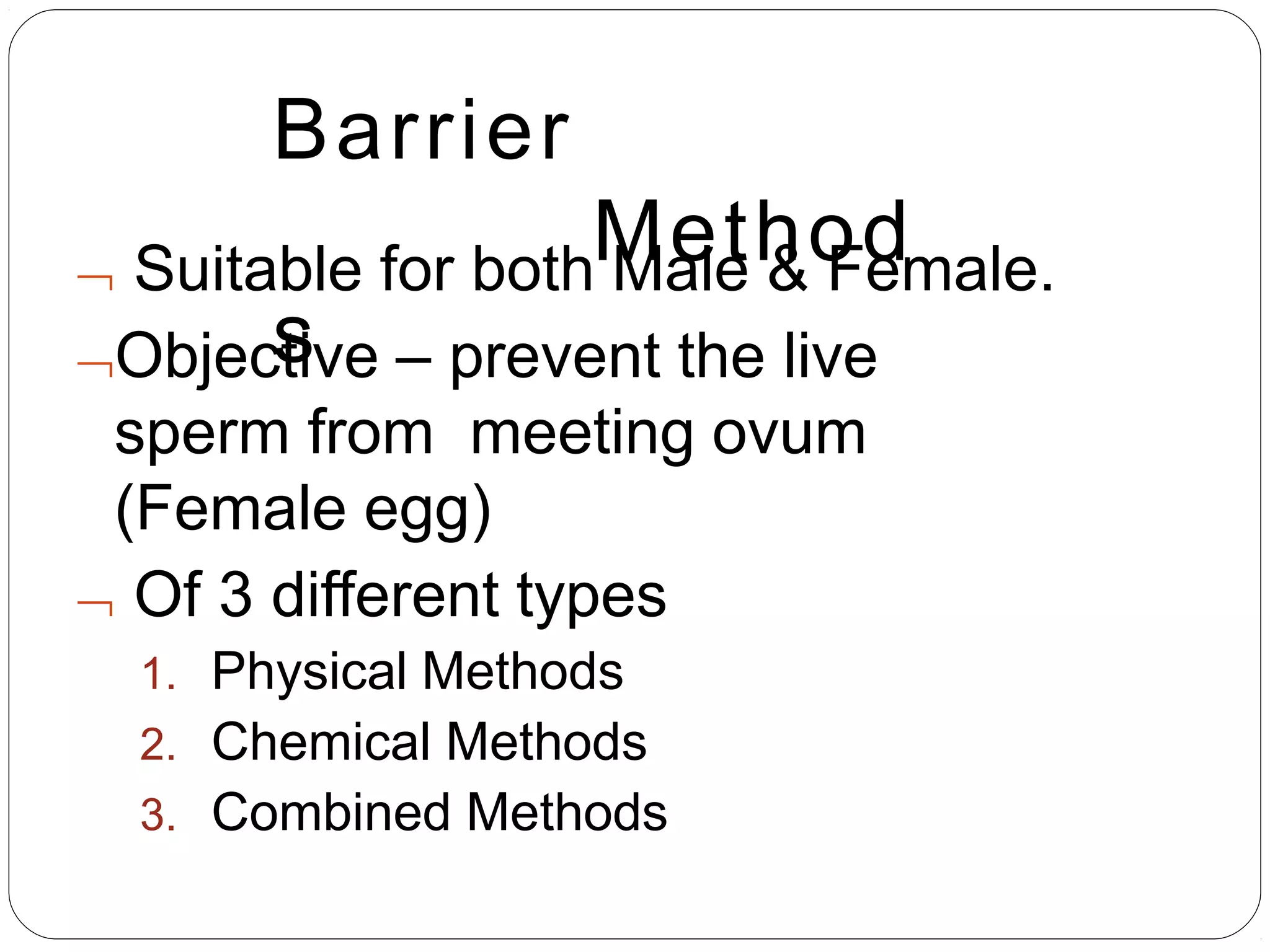The document discusses family planning and contraceptive methods. It defines family planning as deciding the number and timing of children in a family. It discusses various contraceptive methods including barrier methods like condoms and diaphragms, hormonal methods like oral contraceptive pills, and intrauterine devices. It explains how these methods work and their effectiveness in preventing pregnancy. Factors affecting fertility and ways to measure fertility are also summarized.



































































